Scale on Plants - Learn 4 Most Effective Scale Bug Remedies
Scale bugs are bothersome plant pests, but they are also easy to get rid of. Even the simplest home remedies might be effective. Are you wondering how to identify scales on your plants? Check everything you should know about them. Learn the best ways to remove scale bugs.

Scale bug - what kind of a pest is it?
Scale bugs are plant pests from the coccid family. These small insects are no larger than 5 millimeters. They are even smaller at the early stages of their life cycle, which makes them difficult to identify.
Scale insects on plants closely resemble aphids, and these two species are often confused. Keep in mind that their color is typically brighter, slightly brown - while aphids are usually black.
Because there are many types of scale insects, you might also encounter white, cream and transparent bugs of this kind.
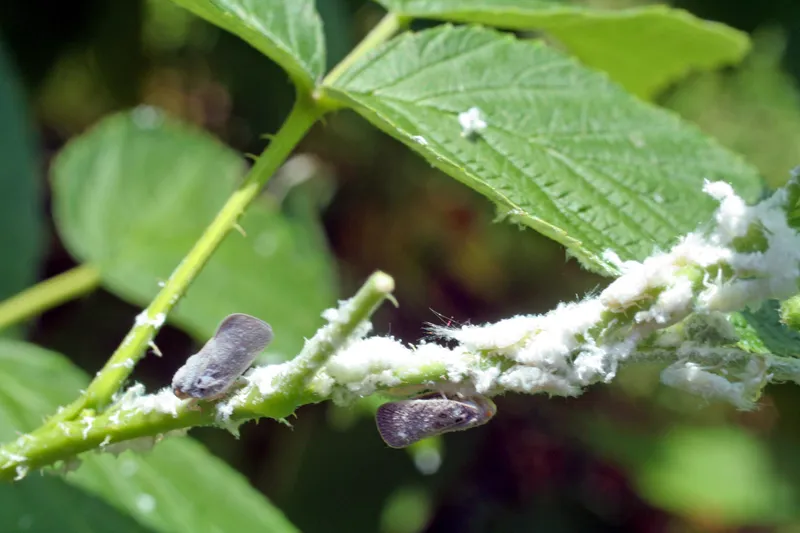
What makes the best environment for scale bugs?
Scale insects, just like other plant pests (e.g. spider mites) love high temperatures. Combine them with low humidity and plants’ malnutrition, and you get perfect conditions for scale bugs to thrive. They typically appear on houseplants as soon as the heating season begins.
Scale on plants can also come from new, already infected plants you bring home. That’s why it’s so important to check the specimens you’re about to buy, and to purchase them only from trusted sources. Buying houseplants in a supermarket is not the best idea, as it might result in a pest infestation.
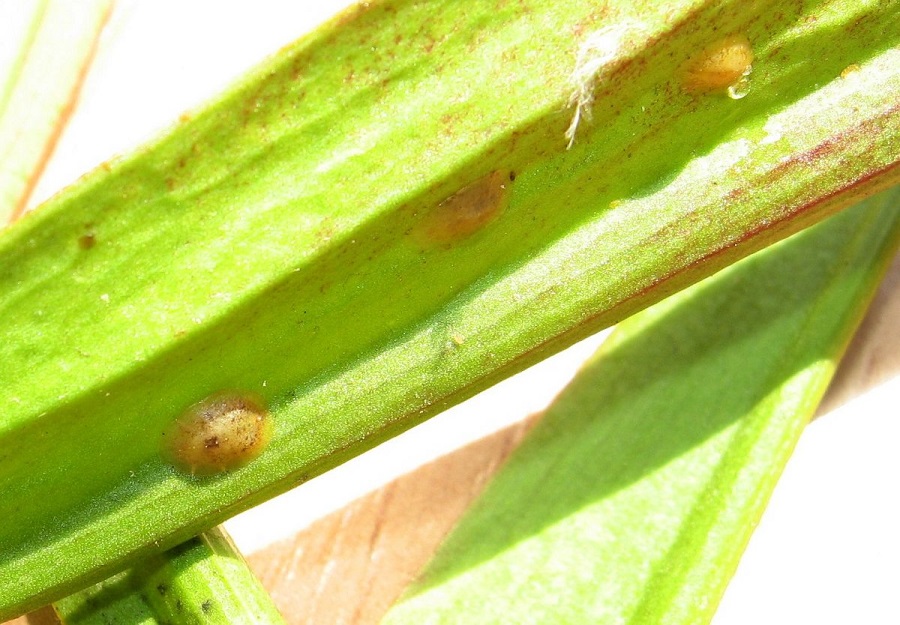
How to recognize a scale bug?
Scale insects usually dwell on houseplants’ leaves, although some types attack stems, too. Yellowing leaves are the first symptom that should alarm you. If they appear, simply take a look at the bottom of a leaf - you should notice the bugs or their eggs. It’s a signal for a quick action to solve the issue.
What plants are typically attacked by scale bugs?
Because of their liking for warmth and low humidity, scale insects usually attack plants grown indoors. They might appear on orchids. Scale bugs on a potted palm aren’t a rarity, either. But this doesn’t mean they cannot appear in your garden as well - especially in summer during long periods without precipitation. They typically appear on oleanders and junipers.
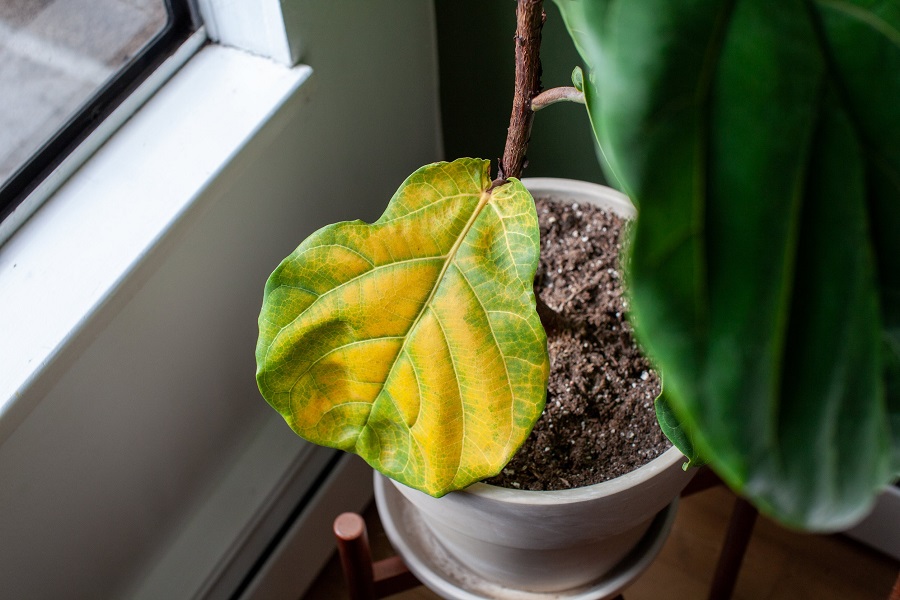
Scale insect identification - what are the symptoms?
The mentioned yellow leaves are the first reason for concern. If the problem appears, make sure to carefully observe the whole plant - not only the leaves, but also the stems, especially the bottom. What else can signify scale on plants? Here are the typical signs:
- lack of growth for a long time,
- drooping leaves,
- drying stems,
- cork-like structure on various parts of the plant.
Scale insects are dangerous - apart from adult bugs causing damage, these pests also lay eggs. Their name is not without reason. They form shields to protect the eggs, that’s why it’s easy to miss them, especially if you don’t examine the plant carefully. If you remove adult insects and leave the eggs, the problem will quickly return.
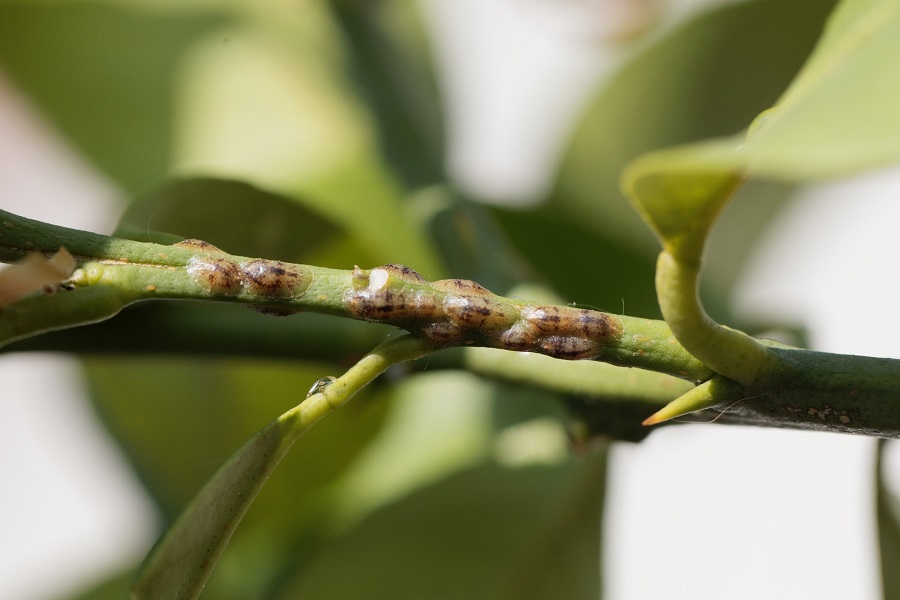
Mechanical scale insect control
There are several ways to get rid of scale insects. In fact, everything depends on how big the problem is. If you discover the pests soon enough, mechanical removal is the best method for getting rid of them. It’s not difficult, although you need several accessories such as:
- a toothpick,
- a cotton bud,
- tweezers,
- a cotton pad.
Before you do anything, prepare some tinfoil or plastic wrap. Use it to cover the surface - conceal the entirety of the pot. This way, you secure the soil. Otherwise, if an egg of a scale bug fell into the pot, the problem could come back after some time.

Natural homemade scale spray
A natural spray is a good solution for scale on plants. You can prepare it using garlic, onions or nettle.
A garlic-based liquid is the easiest to prepare. Simply grate the garlic, pour some water over it, and you can use the mixture after just an hour. Always remember about diluting the mixture 1:1 in water before spraying a plant.
A homemade scale spray made of onions is a bit more time-consuming to make. In this case, the brew needs to be boiled and cooled down. You can use it after 24 hours.
You can also prepare nettle slurry. It’s not difficult - just follow these steps:
- pick some nettles and chop them into smaller parts,
- put the herb at the bottom of a large container and fill it with cold water,
- cover the container with a cloth or a muslin fabric,
- leave it for approximately 14 days - remember to stir it every day.
The nettle slurry is ready after two weeks. How do you know it? Its color changes to slightly brown. You should also detect its suspicious aroma. But remember that “a good medicine tastes bitter” - this rule applies here as well.
Each of the described sprays can be used not only as a remedy for scale insects on plants, but also as a prevention method. This way, you can avoid more serious problems.
Vinegar, soap and denatured alcohol
Wiping the leaves with a mixture of water and various products is a very good method for pests such as scales on plants. Household soap is the best choice, in this case. But it’s not the only possible solution. Other products are popular as well, for instance:
- vinegar,
- denatured alcohol.
Use a very gentle cloth to avoid damaging delicate leaves and stems when wiping them. Mix each of the mentioned products with water so that they aren’t harmful to plants.
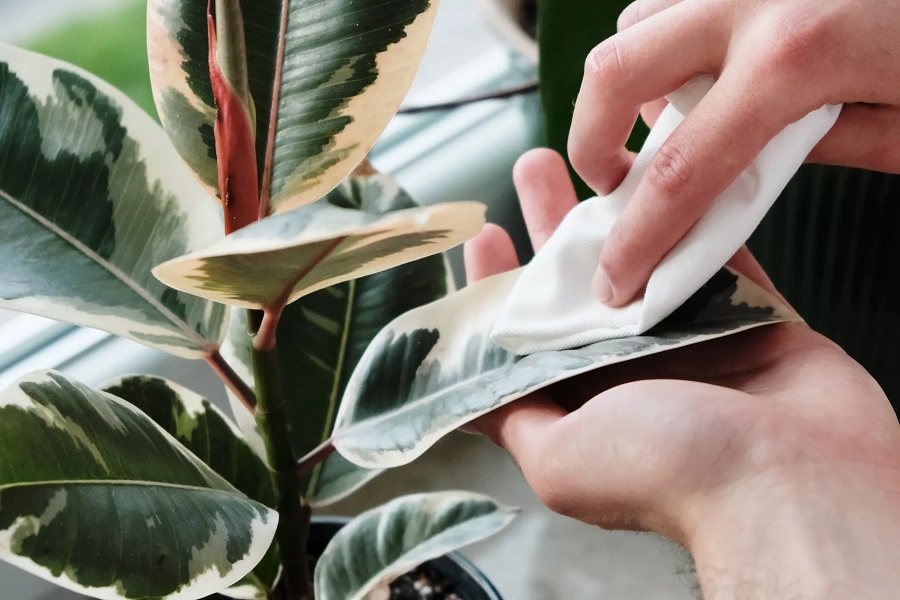
Chemical pesticides for scale insects
Chemical products such as systemic insecticides for scale insects are highly recommended if you’re dealing with a real plague of these pests in your home or garden. In this case, the product affects the plant from the inside and quickly repels the bugs. They come in the following forms:
- granulated,
- liquid,
- sticks.
Chemical insecticides work comprehensively - they remove both adult insects and their eggs. What’s more, they get rid of all types of scale insects. Such products can be purchased at any gardening store. They often appear in online stores as well.
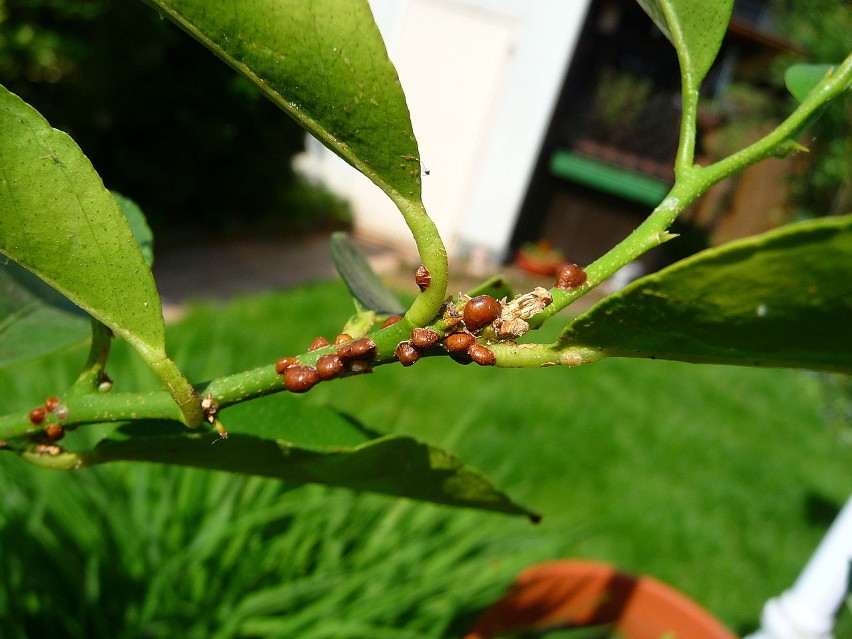
F
📍 Why are there scales on my plants?
Scales on plants appear when the temperatures are high and the humidity is low. The risk of their appearance increases if the plant is malnourished. Interestingly enough, they can be accidentally brought to the garden or the house along with new plants purchased in an unreliable gardening store or a supermarket.
📍 What do scale bugs look like?
Scale bugs are small insects, typically 4-5 mm in length. Their colors are different depending on the type - they can be white, transparent or brown. They are often mistaken for aphids.
📍 How to remove scale from plants?
Home remedies are highly effective against scale bugs - especially at the initial phase of the infestation. You can use natural sprays made from onions, garlic or nettle. You can also clean the plant using water mixed with soap, vinegar or denatured alcohol. If these methods aren't working, use a systemic insecticide for scale insects - they attack the bugs from the inside.
Featured articles




